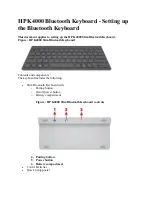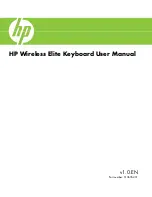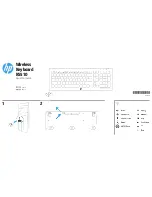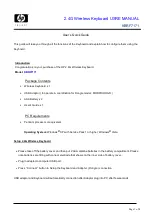
Triple Modular Processing
Editing Triples
12-9
Summary of Amplitude Envelopes in Triples
Because of the special nature of triples and their interactions with amplitude envelopes, you’ll
need to give some thought to the amplitude.in each layer of the triples you program. There are
three primary points to remember, each of which signi
fi
cantly affects the sound of a triple:
•
The optional use of AMP blocks in Layers 1 and 2 (which determines whether Layers 1
and 2 use their own amplitude envelopes)
•
The keymaps (if any) in each layer of a triple (which determine the sound produced by each
layer)
•
Choosing natural or user amplitude envelopes, especially in Layer 3
Other Considerations
Triples are a lot like normal layers, but there are a few important differences.
Processing-Only Layers
Layers that use Algorithms 81–127 can be processing-only layers—that is, they can provide
additional processing for the audio output of other layers, without generating their own sounds.
(They can provide additional processing
and
produce sound, as you’ll see.)
Layer 1 of a triple usually generates sound via sample playback (unless it uses Keymap
0 None
or
168 Silence
). In other words, the sample playback of Layer 1 is routed to the input of
Layer 1’s algorithm. Consequently Layer 1 doesn’t work as a processing-only layer. In addition
to processing sample playback, most of the Layer-1 algorithms (33–62) can also generate
waveforms within the algorithms themselves, using DSP functions like
SINE
and
SAW
.
For some of the Layer-2 algorithms (63–80) the input is the sample playback from Layer 2,
mixed at one or more points with the output from Layer 1. For the remainder of the Layer-2
algorithms (81–100), the only input is the output from Layer 1; the sample playback from layer 2
(if any) is not routed to the inputs of these algorithms. Most of the Layer-2 algorithms can also
generate waveforms within the algorithms themselves.
The input for all of the Layer-3 algorithms is the output from Layer 2. These algorithms never
process the sample playback (if any) from Layer 3. Like the other algorithms, however, they can
generate their own waveforms.
Since layers that use Algorithms 81–127 don’t process their own sample playback data, they
have no pitch parameters, and their algorithm diagrams contain no pitch blocks. When you’re
editing a layer that uses one of these algorithms, if you press the
PITCH
soft button, you’ll see a
blank page.
Layer Parameters
Since a triple is essentially a single layer (except that it uses three voices per note), it has a single
set of layer parameters. You can view and edit these parameters by pressing the
LAYER
soft
button when Layer 1 of the triple is current. If you press
LAYER
when Layer 2 or 3 is current,
you see a blank page.
Output Parameters
Triples have a single set of output parameters controlling all three layers (again because triples
are essentially single layers). You can view and edit the output parameters by pressing the
OUTPUT
soft button when Layer 3 of the triple is current. If you press
OUTPUT
when Layer 1
or 2 is current, you see a blank page.
Summary of Contents for K2661
Page 18: ...2 4 LFOs LFO Shapes...
Page 34: ...3 16 DSP Algorithms...
Page 54: ...5 4 MIDI Note Numbers Note Numbers for Percussion Keymaps...
Page 72: ...7 10 System Exclusive Protocol K2661 System Exclusive Implementation...
Page 82: ...9 4 Upgrading Sample Memory Choosing and Installing a SIMM for K2661 Sample Memory...
Page 334: ...10 252 KDFX Reference KDFX Algorithm Specifications...
Page 340: ...11 6 Glossary...
Page 382: ...12 42 Triple Modular Processing Alphanumeric Buttonpad Entries for DSP Functions...
Page 392: ...B 6 SysEx Control of KDFX MSB and LSB...
Page 442: ...D 20 Contemporary ROM Block Objects Controller Assignments Contemporary ROM Block...
Page 490: ...H 12 General MIDI Standard Mode Controller Assignments...
Page 492: ...I 2 Live Mode Objects Live Mode Programs...
Page 498: ...K2661 Musician s Reference Index...
Page 500: ......
















































